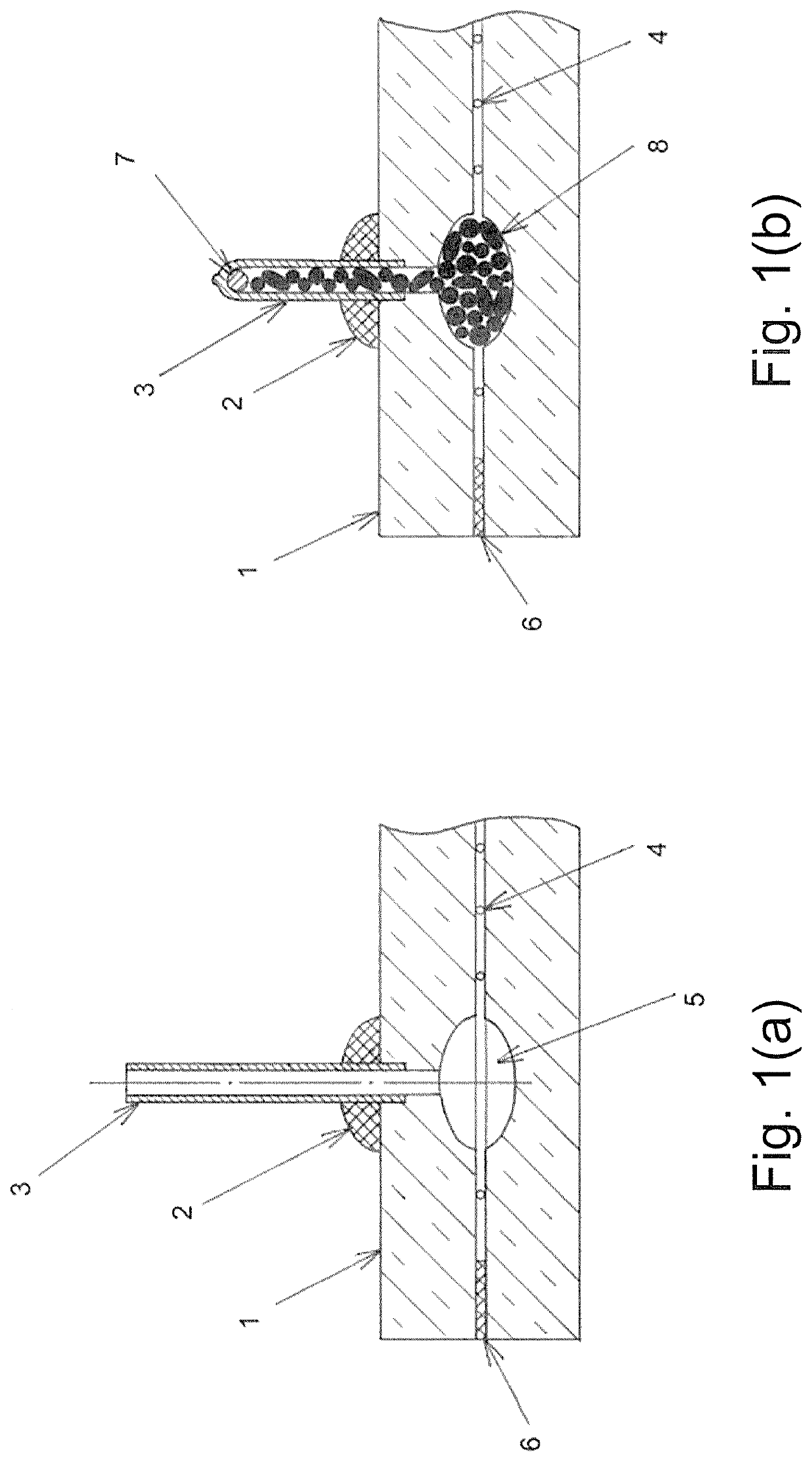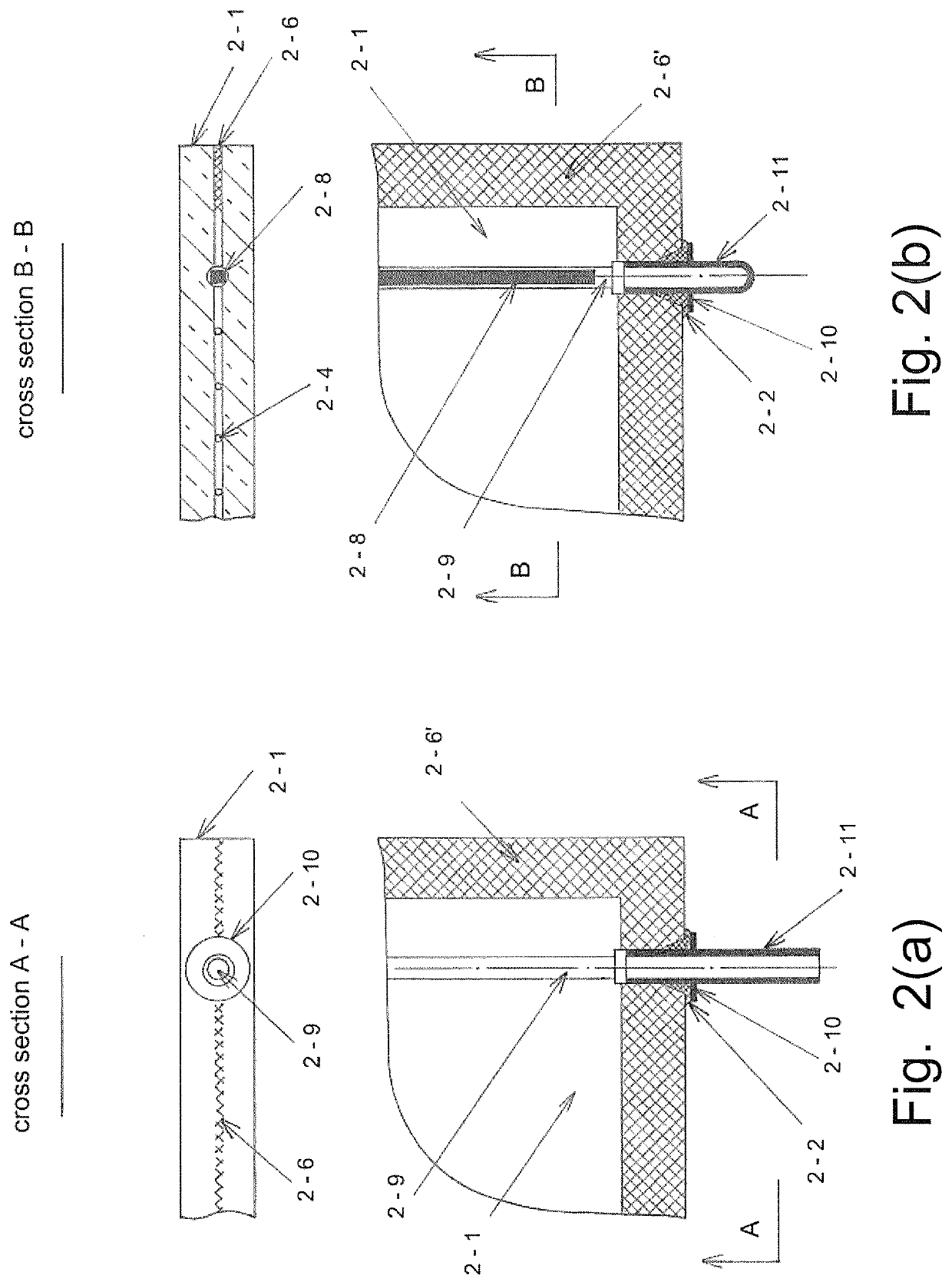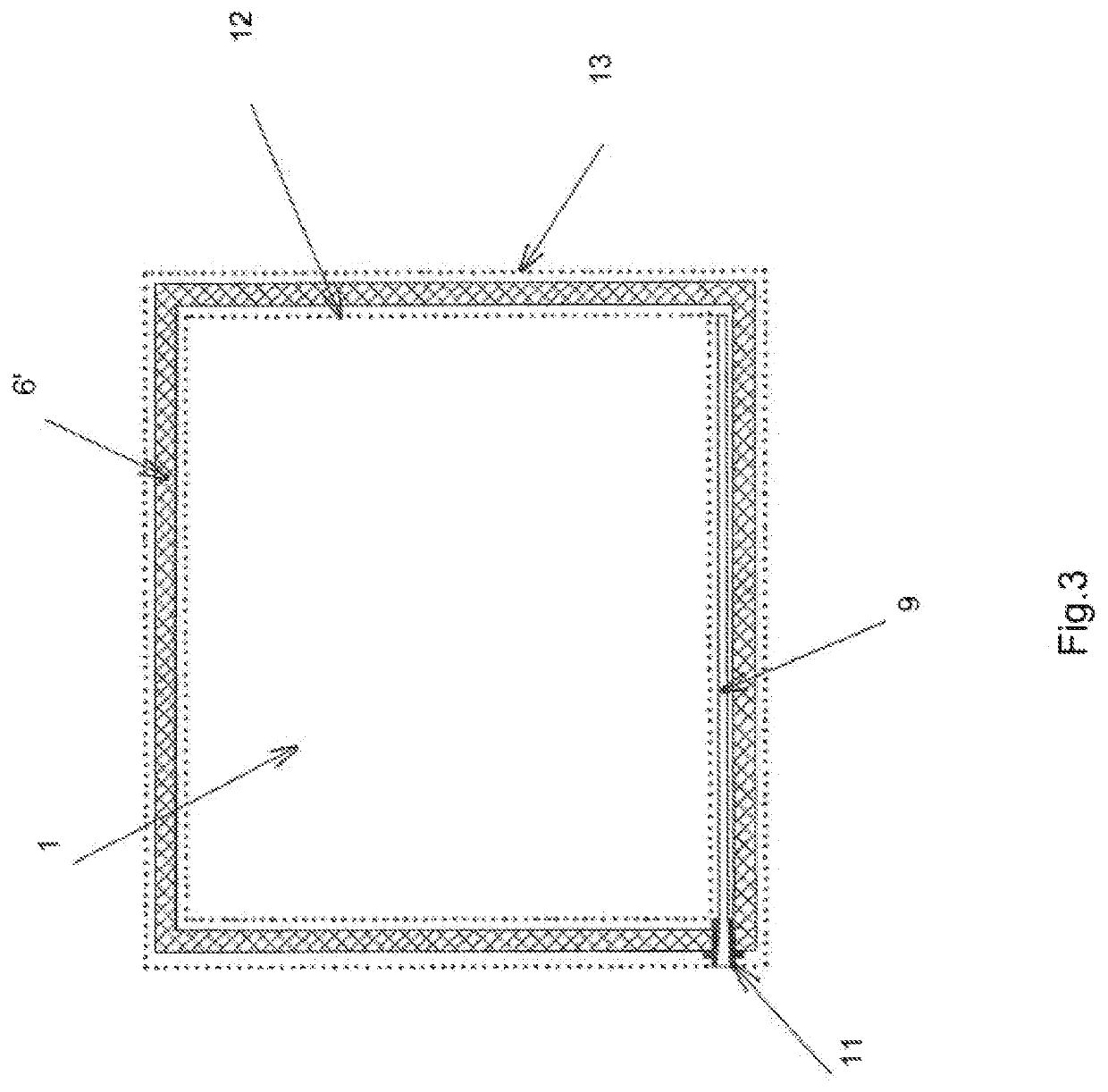Activationless getters and method of their installation into vacuum insulated glazing
- Summary
- Abstract
- Description
- Claims
- Application Information
AI Technical Summary
Benefits of technology
Problems solved by technology
Method used
Image
Examples
Embodiment Construction
[0039]Activationless getter alloys, which capture all atmospheric gases except noble gases at room temperature following the linear or the parabolic law, are vastly superior to any other gas sorbents used in VIPs applications. Among the mentioned alloys the most efficient variant with respect to sorption and from the point of view of production costs are multicomponent alloys containing Ba, Ca, Li, Mg, Na, Sr. They capture gases by way of chemical reactions with formation of non-volatile compounds. According to the classification of getter materials these alloys are named reactants [K. Chuntonov, A. Atlas, J. Setina, G. Douglass. Getters: From Classification to Materials Design. Journal of Materials Science and Chemical Engineering, 2016, Vol. 4, pp. 23-34].
[0040]In the present invention, the preference is given to these multicomponent reactants: cast granules of the composition Ba0.2Ca0.2Mg0.3Na0.1Sr0.2 with the diameter of 0.5-1.5 mm and obtained in inert medium from the melt by t...
PUM
| Property | Measurement | Unit |
|---|---|---|
| Temperature | aaaaa | aaaaa |
| Diameter | aaaaa | aaaaa |
| Size | aaaaa | aaaaa |
Abstract
Description
Claims
Application Information
 Login to view more
Login to view more - R&D Engineer
- R&D Manager
- IP Professional
- Industry Leading Data Capabilities
- Powerful AI technology
- Patent DNA Extraction
Browse by: Latest US Patents, China's latest patents, Technical Efficacy Thesaurus, Application Domain, Technology Topic.
© 2024 PatSnap. All rights reserved.Legal|Privacy policy|Modern Slavery Act Transparency Statement|Sitemap



